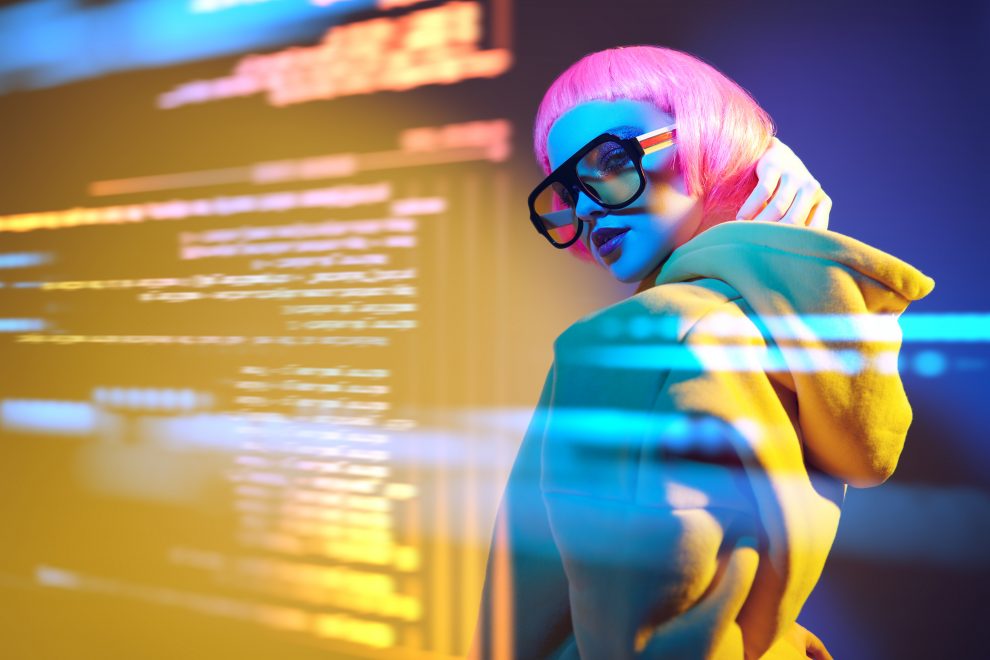The Weight of the Counterfeit Industry
The aim of luxury fashion houses has always been to be desired and sought after, creating beautifully designed and crafted clothes and accessories that change perception and build a following. As a result, these pieces are beyond many people’s reach — and where there is demand there will always be someone looking for an opportunity to profit from it. According to an OECD (Organization for Economic Co-operation and Development) study, the trade of counterfeit and pirated goods amounted to 2.5% of world trade in 2019. In 2021, customs and border patrol of the United States seized over $30 million worth of counterfeit luxury handbags.
Every year, almost $3 trillion worth of goods are counterfeited. From sneakers to designer handbags and wine, consumers are constantly facing the risk of buying fake products instead of the real thing. This unfortunate reality leads to a tension in the consumer-brand relationship, causing customers to lose confidence in brands and making it nearly impossible for them to sell their items on the secondary market.
According to the Incopro Consumer Research Report, one in two U.S. consumers (52%) have lost trust in a brand after unintentionally purchasing counterfeit products online. Brands have started to pick up on the staggering number of their hopeful customers affected by the counterfeit market and are looking for solutions.
Who Buys Fakes — and Why is it a Problem?
Generally, consumers who buy counterfeit products fall into two categories: those who buy counterfeit products without knowing that the product is counterfeit, and those who buy fakes knowingly. One of the biggest problems here is that people who buy fakes consciously don’t know why doing so is a bad thing, and they often don’t understand the impact. They see a huge brand selling expensive goods and making enormous profits — but what they don’t see are the jobs and the people involved in making the goods, the crafts handed down for generations, the laws in place to make sure that this process is preserved and the company’s obligation to reduce its environmental impact. It is the luxury industry’s role to educate consumers about these factors.
Although buying counterfeit fashion may seem inconsequential, the production of fakes — which, as a practice, is in itself illegal — operates outside of laws and legislations protecting human rights and manufacturing’s impact on the environment, linking it to job losses, child labour, human trafficking, organized crime and environmental harm as investigated by the OECD’s Dangerous Fakes report.
From a financial perspective, counterfeiting is a huge source of competition on a global scale. Brands are left worrying about both competitors taking up market share and the counterfeit market actors who destroy consumer-brand trust. Going beyond taking income away from a company, its employees and suppliers, counterfeiting also greatly affects customers’ ability to trust the traceability of their goods within an open marketplace. Without proper security and tracking measures, consumers anxiously lose trust in brands to protect their customers from theft.
How Can Fashion Houses Use Technology to Combat the Counterfeit Industry?
Both private businesses and governments are working together to stop the counterfeit industry. Companies are rapidly investing and implementing innovative, tech-driven solutions to combat this problem and maintain trust with consumers, whilst government authorities are dedicating missions to work against the counterfeit market.
One technology adoption that looks to weaken the counterfeit industry are NFTs (non-fungible tokens) linked to NFC (near-field communication) tags, anchored in the blockchain. The last two years has seen a huge tidal wave of interest around NFTs, information or images that are incorruptibly linked and therefore authenticated by the blockchain. Up until now, fashion houses have mainly been interested in investment in this technology as a marketing tool to increase brand engagement and loyalty as well as create a buzz. Over the last year, there have been new collaborations announced with innovators such as the Bored Ape Yacht Club and using NFT artists as a way to launch a collection with limited editions, virtual or real.
However, brands are now starting to realize the real potential of linking physical objects to the blockchain through NFT technology, as a “phygital” object. This ensures authenticity in a way that is easy to check and impossible to replicate or corrupt. Creating a unique NFT, which corresponds to an item like a bag or sneaker, would give each physical item unique metadata, which informs its exact traceability and validates its authenticity. It is something that we at collectID have been developing since 2018, but awareness and investment of the potential of this physical/digital bridge is growing throughout the industry.
For example, LVMH, in partnership with Prada and Cartier, formed the Aura Blockchain Consortium in April 2021, the world’s first global luxury blockchain; . This is a sign that brands are turning toward the immutability of the blockchain to remove the possible incentives of selling counterfeit products.
Blockchain technology allows for easier and safer reselling on the second market; encourages sustainable practices within fashion and contributes to the circular economy and educates consumers of the products they buy, where they come from, if they are sustainable and more. Traceability in fashion also gives an empowered sense of consumer responsibility as well as, hopefully, an opportunity for a step away from fast fashion. In brief, blockchain is the new black!
David Geisser founded collectID in 2018 with Sergio Muster. Geisser reached out to Sergio because he is the “sneaker guy” in Europe, and Muster was so fascinated by the technology that he joined collectID immediately. Before this, Geisser had gained valuable business and innovation experience at Boydak Strategy Consulting, where he focused on business model innovation and rapid prototyping. During this time, Geisser led several projects and developed various MVPs for different clients. He graduated from the University of St. Gallen with a high MA in business innovation, which included a one-year program in design thinking in collaboration with Stanford University. As part of the program, he developed an MVP for a Swiss-based retail bank. collectid.io








